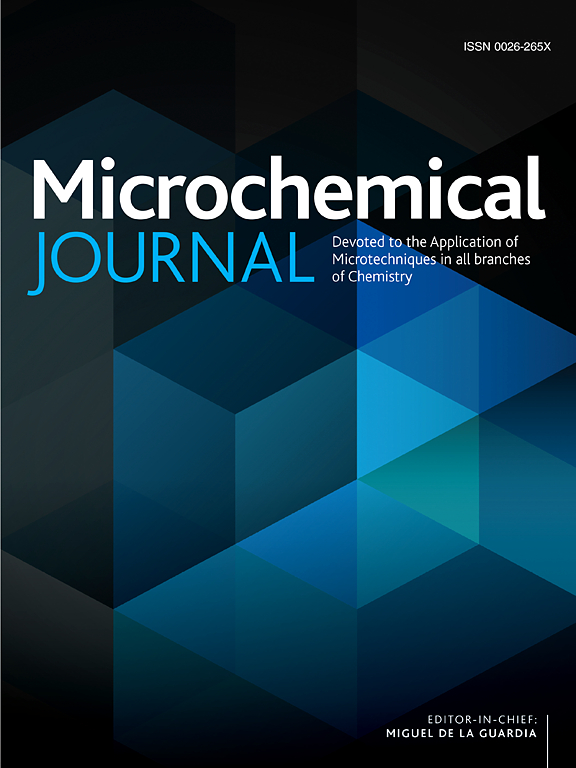Green liquid chromatography mass spectrometry method for determination of n-methyl-n-benzylnitrosamine (carcinogenic impurity) in lacosamide drug substance by advance metrics
IF 4.9
2区 化学
Q1 CHEMISTRY, ANALYTICAL
引用次数: 0
Abstract
N-Methyl-n-benzylnitrosamine (MBNA) is one of the nitrosamine moiety present in lacosamide, during the manufacturing of lacosamide active pharmaceutical ingredient (API). As a result, a sensitive and reliable technique featuring multi reaction monitoring method has been developed for the quantitative assessment of MBNA impurity in the lacosamide API. The separation of lacosamide and MBNA obtained with a Zorbax SB-Phenyl (250 × 4.6 mm, 5 µm) column under gradient eluent conditions. 0.1 % formic acid in water and 0.1 % formic acid in methanol were used as mobile phases A and B, respectively, in the current study. The mobile phase flow rate is 0.8 mL min−1. The multi-reaction monitoring transition for MBNA is 151.00 > 91.20 at a collision energy of −12.0 eV. The limit of detection and limit of quantification concentrations were validated with 0.0015 ppm and 0.0045 ppm, respectively for MBNA impurity in the current study. The accuracy results were lies within the range of 70 %–130 %. Eventually, the developed liquid chromatography tandem mass spectrometry method offers a linear, accurate, suitable, and precise approach to estimate the MBNA impurity present in the lacosamide API.The environmental friendliness of this method was assessed using the national environmental method index (NEMI), the modified green analytical procedure index (MoGAPI), the complex modified green analytical procedure index (Complex MoGAPI),the analytical greenness (AGREE) tool, and the analytical eco-scale. The AGREE score and the eco-scale score of the developed method was found to be0.61 and 67, respectively.

求助全文
约1分钟内获得全文
求助全文
来源期刊

Microchemical Journal
化学-分析化学
CiteScore
8.70
自引率
8.30%
发文量
1131
审稿时长
1.9 months
期刊介绍:
The Microchemical Journal is a peer reviewed journal devoted to all aspects and phases of analytical chemistry and chemical analysis. The Microchemical Journal publishes articles which are at the forefront of modern analytical chemistry and cover innovations in the techniques to the finest possible limits. This includes fundamental aspects, instrumentation, new developments, innovative and novel methods and applications including environmental and clinical field.
Traditional classical analytical methods such as spectrophotometry and titrimetry as well as established instrumentation methods such as flame and graphite furnace atomic absorption spectrometry, gas chromatography, and modified glassy or carbon electrode electrochemical methods will be considered, provided they show significant improvements and novelty compared to the established methods.
 求助内容:
求助内容: 应助结果提醒方式:
应助结果提醒方式:


